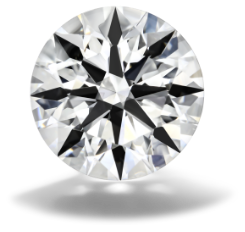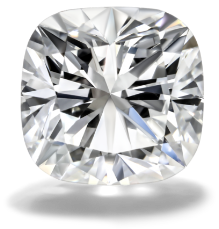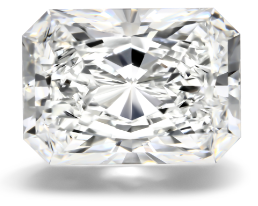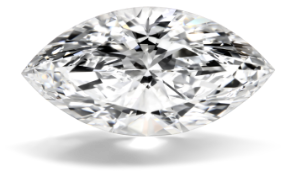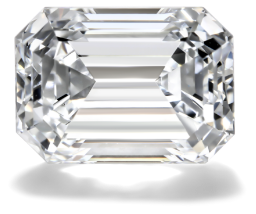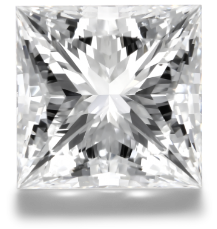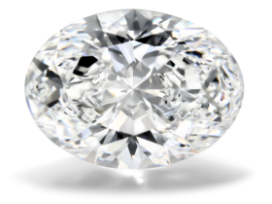
Lab Grown Diamonds:
The Affordable Alternative
What if you could have a diamond that was not only stunning, but also ethically and sustainably made? Enter lab grown diamonds, a revolutionary alternative to traditional mined diamonds.
Shop Lab Diamonds By Shape
Why Choose Lab Grown Diamonds?
No Mining
Choose lab diamonds for a responsible choice! They are Made using precise technology, eliminating the need for mining.
Beauty
Lab grown diamonds are just as stunning as mined diamonds, with all the same physical, chemical, and optical properties.
Value
Maximise on your budget with a whiter, bigger diamond for that once in a lifetime occasion. They last forever.
What is a lab grown diamond?
Lab diamonds, also known as grown, man-made or cultured diamonds, are created through a high-tech process in a laboratory setting. The laboratory replicates the natural conditions found in the earth’s crust, including high temperatures and pressure, which allows for diamond formation. As a result, lab diamonds have the same chemical structure and properties as mined diamonds.
They are typically more affordable, making them a great choice for budget-conscious shoppers looking for quality stones. Additionally, lab diamonds are not subject to the same ethical and human rights issues that come with mining activities. This means that consumers can shop with confidence, knowing their purchase is a conscious free one.


Why are diamond companies trash talking lab grown diamonds?
1. Threat to their market
Priced much lower, they pose a competitive threat to traditional diamond companies. To maintain the perception of natural diamonds as more valuable, some companies resort to negative marketing tactics.
2. Perceived value with rarity
Natural diamonds are NOT rare. By trash-talking cultured diamonds, diamond companies may try to argue that lab-grown diamonds lack the same emotional and symbolic significance as natural.
3. Consumer confusion
There is consumer confusion about their characteristics. Diamond companies take advantage of this by exaggerating the differences between lab and natural diamonds. This creates unsubstantiated doubt among buyers.
So, what makes them different from natural diamonds?
Lab grown diamonds are becoming more and more popular. But why? What is it that sets them apart from natural mined diamonds? Lab-created diamonds are not imitations or substitutes for natural diamonds. They share the same brilliance and fire and are visually indistinguishable from natural diamonds.
Lab’s differ from natural diamonds only in their origin. While they are not naturally occurring, they are real diamonds and offer a sustainable and cost-effective alternative to mined diamonds. Let’s explore why they are the new must have for any fashion-savvy individual here.
Shop Engagement Rings by Style
You have your own unique style. From classic favourites to
the more contemporary, you will find ‘The One’ here.
Are all lab diamonds the same?
Not all lab diamonds are the same, because they can be created using different growth processes. This results in
variations in their characteristics. The two manufacturing processes are chemical vapor deposition (CVD)
and high pressure, high temperature (HPHT).

HPHT Diamonds
High-pressure high-temperature lab diamonds are made through a process that mimics the conditions under which natural diamonds are formed deep within the Earth. In simple terms, a small piece of diamond (called a diamond seed) is placed in a high-pressure chamber and exposed to extreme heat. This causes carbon atoms to bond together, just like in natural diamonds. The process can take several weeks or even months, as the carbon atoms slowly build up and the diamond grows. Once the desired size and quality is achieved, the rough diamond is cut and polished to create a beautiful lab-grown diamond that is identical in composition to a natural diamond.
CVD Diamonds
Chemical Vapor Deposition diamonds are created in a laboratory – Hence they are called lab diamonds! The CVD growth process also involves a diamond seed that is placed in a vacuum chamber, along with a mixture of gases. These gases are then heated to extremely high temperatures, causing them to break down and release carbon atoms. These carbon atoms then bond together and form a diamond crystal around the seed. Over time, the diamond grows layer by layer, creating a fully formed diamond. This process allows for the production of diamonds that have the same chemical and optical properties as natural diamonds, but at a lower cost and with less environmental impact.
HPHT or CVD: Which one should I buy?
Visually, there is no way to differentiate between a CVD and HPHT diamond. Both methods can produce diamonds that are visually
and physically indistinguishable from mined diamonds, therefore we don’t choose one over the other when procuring our lab grown diamonds.
All of our lab grown diamonds are certified by GIA (Gemmological Institute of America) or IGI (International Gemmological Institute).
Remember that the diamond report of your stone carries most if its the value, therefore we only sell diamonds with internationally recognised certificates.
All of our diamonds are inspected for quality and have an excellent cut, polish and symmetry. Apart from HPHT or CVD,
there are so many other factors to consider when buying a lab grown diamond. If you would like to delve in the technical details,
you can read more about it here.
What about grading reports?
Grading reports play a crucial role in the world of diamonds, whether they are natural or lab-grown. They provide buyers with important information about the diamond and absolutely determines the diamonds’ value.
The report includes details about the cut, colour, clarity and carat weight – all the same factors reported on a natural diamond. Another important component of grading reports is the inclusion plot. The inclusion plot on provides an accurate map of all visible inclusions within a diamond and helps determine its clarity grade.
Two well-respected, internationally recognised grading organizations stand out: Gemmological Institute of America (GIA) and International Gemmological Institute (IGI). Both organizations use standardized processes for evaluating lab grown diamonds based on international standards set by ISO 18323.

Popular Engagement Rings
Discover our most popular settings to pair with lab created diamonds.
We make your ring from scratch to perfectly fit your diamond choice.
Natural vs Lab Grown Diamond Cost – Sep 2023
| 2.00ct FVVS2 | Natural 2ct | Lab 2ct |
|---|---|---|
| Rough Cost | $23,838 | $290 |
| Cutting Cost | $233 | $167 |
| Cert Cost | $189 | $66 |
| Other Costs | $111 | $84 |
| Total | $24,370 | $607 |
| Cost To Create Product | –97,5% |
Why are lab diamonds so expensive?
The process of growing diamonds requires a significant investment in equipment and expertise. High costs associated with research and development, as well as the operation and maintenance of the lab facilities, contribute to the overall price.
Lab diamonds require intense heat and pressure to mimic the natural diamond formation process. These conditions require energy consumption, which adds to the production costs. Moreover, the production time for lab diamonds can be lengthy, further increasing their price.
Lastly, they undergo a rigorous certification process to ensure their quality and authenticity, which involves additional costs for grading and verification by reputable laboratory institutes. This certification adds value to the diamonds and consequently increases their price.
Will lab diamonds lose value?
Customers buy diamonds as a symbol of love and commitment, not as an investment. The value of lab diamonds will depend on market demand, advancements in technology and the overall perception within the jewellery industry.
As more consumers embrace the idea of ethically sourced and sustainable diamonds, the demand may increase, potentially driving up their value. On the other hand, advancements in lab diamond production techniques and increased supply could lead to a decrease in price.
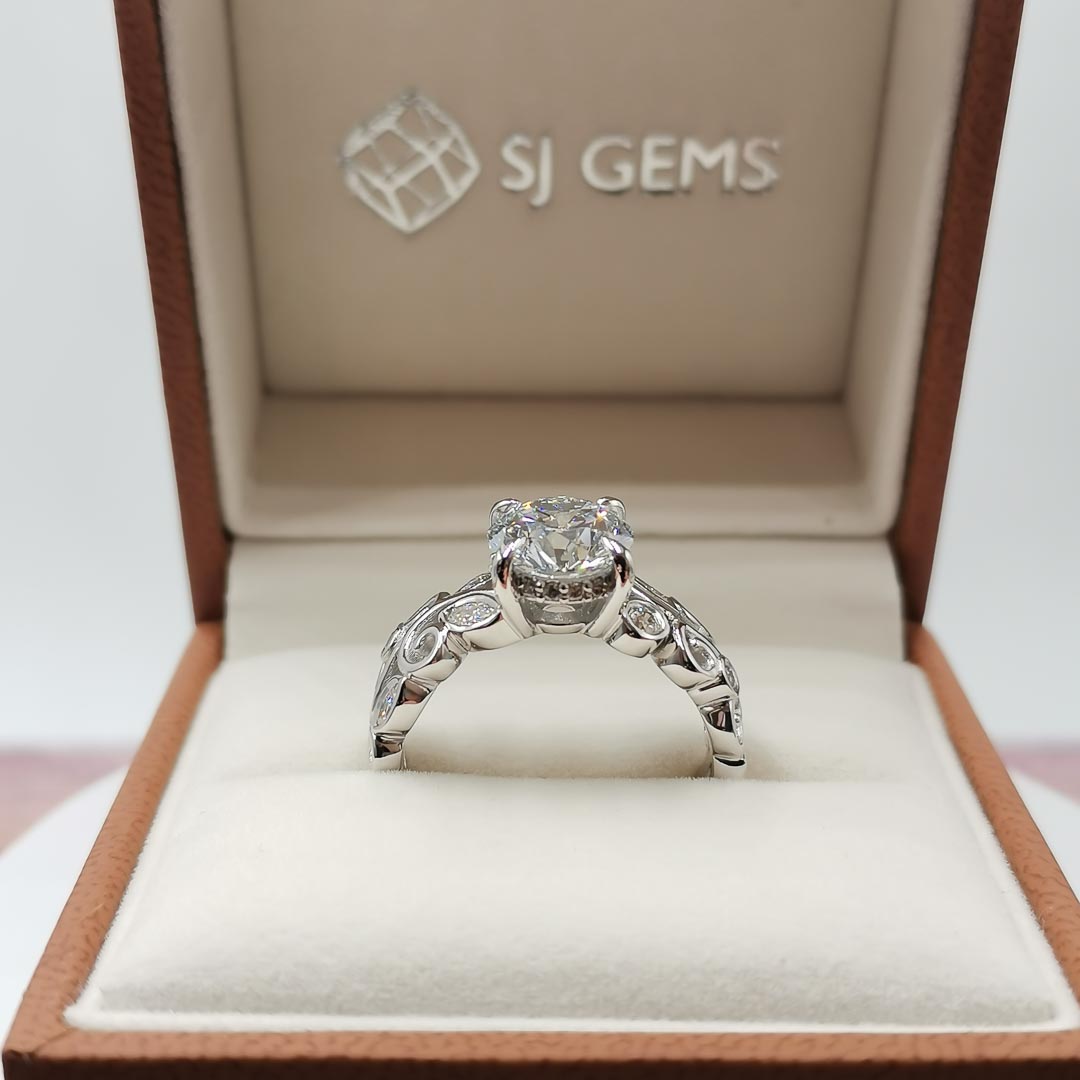
Lab Grown compared to Mined Diamond Prices
| Rate R18.50 | Shape | Weight | Colour | Clarity | Price | Saving |
|---|---|---|---|---|---|---|
| Natural | Round | 0.50ct | G | VS1 | R25,900.00 | |
| Lab Grown | Round | 0.50ct | G | VS1 | R4,500.00 | 82% |
| Natural | Round | 1.01ct | G | VS1 | R153,217.00 | |
| Lab Grown | Round | 1.01ct | G | VS1 | R8,000.00 | 94% |
| Natural | Oval | 1.01ct | G | VS1 | R130,795.00 | |
| Lab Grown | Oval | 1.01ct | G | VS1 | R8,500.00 | 93% |
| Natural | Oval | 2.0ct | G | VS1 | R579,235.00 | |
| Lab Grown | Oval | 2.0ct | G | VS1 | R18,000.00 | 96% |
The price of lab grown diamonds in SA
The lab diamond market is fresh on the South African scene and jewellery stores, big and small, have not yet established a good supply chain. As a result, the cost of lab-grown diamonds can vary significantly from one jeweller to the next.
At SJ Gems, we are proud to offer lab-grown diamonds at trade prices for all our customers. Unlike with other retailers, our pricing is updated daily to reflect the exchange rate and current market value. This guarantees you the lowest price in South Africa.
A quick internet search will reveal jewellers selling lab-grown diamonds anywhere from 50% to 60% to that of their natural counterpart. Below we have tabled some lab diamond prices from SJ Gems where you can save up to 90%!
Are lab-grown diamonds considered simulants?
Diamond simulants or lookalikes are materials that have a similar appearance, but are not chemically identical to it.
Unlike lab created diamonds, simulants are soft and can easily be distinguished from real diamonds.
The most well-known examples of diamond simulants are cubic zirconia (CZ) and moissanite.
Cubic Zirconia
Cubic zirconia (CZ) is a synthetic material that has been used as a substitute for diamonds in jewellery since the 1970s. It is made from zirconium dioxide, which is a crystalline form of zirconium oxide. Often referred to as “cubic”, this man-made gemstone has gained popularity with low prices and close resemblance to natural diamonds.
While cubic zirconia is a hard material, it is not durable. It can easily get scratched or chipped with everyday wear. Cubic zirconia may appear dull over time, especially when compared to a well-cut diamond. With its lack of imperfections, it can look too perfect and fake to some people’s eyes.
Moissanite
Moissanite is composed of silicon carbide and has a chemical formula of SiC. It can be found naturally in extremely small quantities, but most moissanite used in jewellery today is created in a laboratory. It has a similar appearance to diamonds, with a high level of brilliance and fire, but it is slightly softer (9.5 on the Mohs scale).
While moissanite may not have the same rarity as diamond, it is a beautiful and durable gemstone that offers a more affordable option for those looking for a diamond alternative.
Test yourself: A lab diamond or a CZ? click to find out…

Can you view your potential diamond
at other online stores?
SJ Gems offer High Definition 360 videos of all our lab diamonds, so you are left with no surprises!
We have diamonds in all the popular shapes like round, princess, pear, cushion, oval and marquise.

Do we have a moral obligation to buy lab grown diamonds if real diamonds are potentially “blood diamonds”?
This is a subjective question and depends on individual values and beliefs. You have to consider the implications of potentially buying something that may come from areas of conflict or involve exploitative practices. In South Africa, there are few diamond dealers that can guarantee you a source to market trace.
Lab grown diamonds are created in an environment without the same ethical concerns. Consumers can potentially contribute to a more sustainable and ethical diamond industry. It is important to note that not all real diamonds are “blood diamonds”. Ultimately, your decision should be based on personal values and the information available about the diamond industry.
Are lab diamonds the environmentally-friendly choice?
One of the major reasons for the high interest in lab diamonds is the claim that they are more environmentally-friendly compared to their mined counterparts. We all want to take a step towards a greener future and choosing an eco-friendly diamond is a great place to start. With the diamond industry known for its lack of transparency, it’s essential to educate yourself before making a purchase.
No mining activity is involved in their production, thus eliminating one of the most significant aspects of environmental damage caused by traditional diamond mining. Mining activities often result in land degradation and deforestation, leading to loss of biodiversity and displacement of animal species.
Another is that they do not require large amounts of energy and water for their production. Lab diamonds use much less water and emit fewer carbon emissions compared to mined diamonds. There are studies that claim lab diamonds use 67 litres of water per carat, while mined diamonds use 470 litres of water. (Personally, I think it’s 20 times as much).

Conclusion: So what exactly are the “downsides” of lab grown diamonds
There are some disadvantages or limitations associated with these diamonds. Factors such as
price comparison, rarity, ethical concerns, resale value and consumer perception
should all be taken into consideration.

1. Cost
Lab grown diamonds are typically priced much lower- attributed to the difference in their rarity. Are we going to buy them for 10$/carat in 5 years from now? Certainly not! There will always be a cutting and polishing cost, which is exactly the same as natural diamonds. Also, the grading reports are not inexpensive. With all of that in mind, 10$/carat seems highly unlikely.
2. Resale value
While natural diamonds are inherently considered valuable, the perception and demand for lab grown diamonds may change over time, affecting their resale potential. However, diamonds have never had a great resale value either. Both are simply not an investment. With exceptions of course
3. Ethical concerns
There are still concerns surrounding the carbon footprint associated with their production. The energy-intensive growth process used to create them may not always be socially acceptable. So far, only one study has been published on the cost differences. Like with the entire diamond industry, transparency is not what they are known for.
Lab Grown Diamond FAQ’s
Who can create a custom setting for a lab-grown diamond ring?
It is important to choose a reliable and reputable company to ensure the best results. SJ Gems is considered a reliable and reputable company to create a custom setting for your diamond. They have a team of skilled craftsmen who specialize in creating unique and beautiful settings that perfectly complement the center stone. Additionally, SJ Gems offers the best prices guaranteed, making them the best option for those looking to create a custom diamond engagement ring.
What’s stopping jewellery stores from selling lab grown diamonds as the real thing?
To ensure transparency and trust in the diamond industry, it is important for jewellers to rely on gemmological tests and scientific methods to identify lab grown diamonds. By accurately distinguishing between lab grown and natural diamonds, jewellers can provide customers with accurate information and options, allowing them to make an informed choice based on their preferences and values. Ultimately, the choice to sell lab grown diamonds as natural diamonds rests on the commitment to transparency and consumer trust.
Can a jeweller tell the difference between lab grown and mined diamonds?
With advancements in technology and production methods, it has become increasingly difficult to distinguish between the two types of diamonds. Especially without specialised equipment which most jewellers are not willing to invest in. These machines are quite a financial outlay.
For a conclusive determination, jewellers can consult with accredited diamond grading labs that have access to advanced technology and expert gemmologists. These labs employ a combination of scientific analysis and extensive diamond knowledge to provide detailed reports on a diamond’s characteristics and origin.
Can lab diamonds pass a diamond tester?
There have been various diamond testers available on the market for years. Jewellers and gold dealers have mainly used them to identify moissanite, cubic zirconia, diamond etc. However, Lab diamonds are a fairly new thing and the majority of these “old” testers are not nearly accurate enough.
Lab diamonds have different thermal and electrical conductivities compared to natural diamonds. This is caused by the different growth processes they undergo in the laboratory. When a diamond tester measures the electrical conductivity and thermal conductivity of a diamond, it can determine whether it is lab grown or natural.
Lab diamonds share many similarities with natural diamonds, therefore any cheap or “out dated” diamond tester can easily give the wrong results. Specialised testers that have been specifically designed to test for lab grown are available and are dependable for the correct results.
Will lab diamonds replace real diamonds?
While there are advantages to lab diamonds, there are also some disadvantages to consider. Lab diamonds are offered at a much lower price point, but they may lack the same sentimental value and historical significance associated with natural diamonds. Additionally, some consumers may still prefer the prestige and rarity of natural diamonds, if you believe they are rare…
Overall, the growing popularity and availability of lab diamonds, combined with ethical concerns and cost considerations, suggest that they have the potential to become a viable alternative to natural diamonds in the future. As consumer awareness and demand for sustainable and affordable luxury rise, lab diamonds may increasingly replace their mined counterparts.
Is a lab made diamond any less desirable than a mined one?
Lab diamonds are not only a socially responsible choice, but they also possess the same desirable features as their natural counterparts. Both types of diamonds have the same crystal structure, refractive properties and thermal conductivity. In fact, even expert gemmologists cannot distinguish a lab grown diamond from a natural diamond without specialized equipment.
In terms of cost, lab created diamonds are typically more affordable than natural diamonds of comparable size and quality. This accessibility allows consumers to enjoy the beauty and luxury of diamonds at a more affordable price point.
To ensure consumer confidence, lab grown diamonds are accompanied by certifications from reputable gemmological laboratories. These certifications guarantee the authenticity and quality of the diamond, providing reassurance to buyers. With these qualities, lab grown diamonds offer a compelling alternative for those seeking beauty, value, and conscious consumption.

